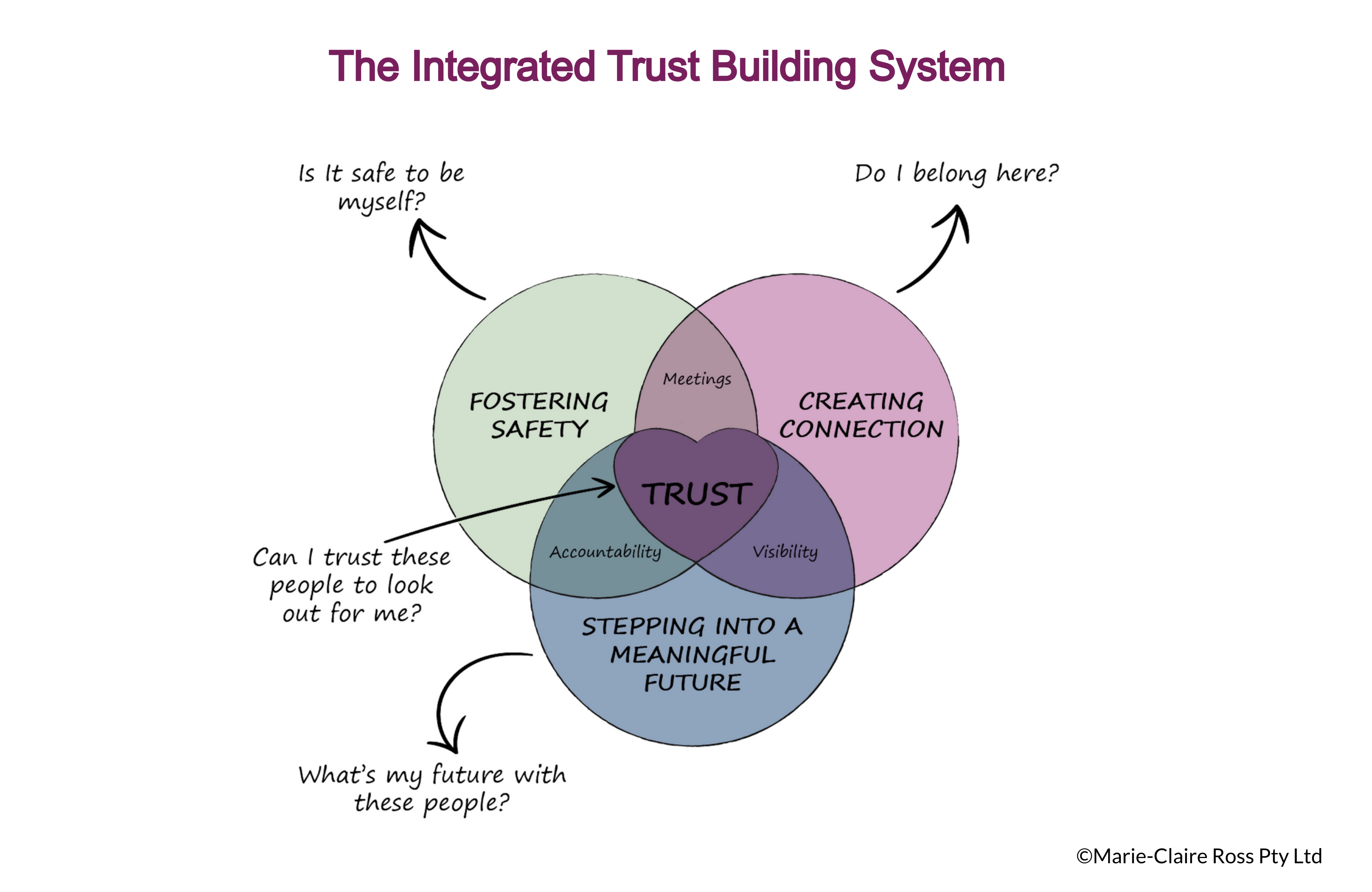
6 Smart Techniques to Help Employees Understand the Meaning of Work
Meaningful work is something we all crave. When we understand the meaning in the work we do, it increases our engagement and intrinsic motivation.
The Energy Project, a training and consultancy company, surveyed more than 12,000 employees across a range of companies and industries. They found a direct correlation between finding meaning in work and high performance.
The survey found that employees who claimed to derive meaning from their work were reportedly 1.4 times more engaged at work, 1.7 times more likely to feel job satisfaction and three times more likely to stay with their company. Unfortunately, only 50% of employees experienced a sense of meaning in their work.
As a leader, it’s not enough to inspire ourselves and our team to complete work. The more we do work that appears to have no real purpose, the less motivated and engaged we become. A powerful leadership skill is to help employees understand the meaning of their role and how it contributes to the success of the organisation.
A 2016 study reported in the Sloan Management Review found that few employees made any mention of effective leadership during meaningful moments at work. Yet, poor leadership was associated with undermining meaningfulness.
Conveying the meaning of work is one of the least utilised tools a leader has in their leadership toolbox to avoid poor performance. Yet, it is incredibly powerful and quite easy to do.
In a big organisation, it is easy for employees to lose their sense of identity and value when they are measured against the inner workings of the organisation and not their own potential.
It’s a leader's job to align each employee’s self-interest to a more meaningful and bigger purpose set by the organisation. This is vital to transitioning your team into the achievement zone, rather than falling into the anxiety, abatement or apathy zones.
Here are some strategies to improve meaningfulness that are from my book, Trusted to Thrive: How leaders create connected and accountable teams.
1. Have conversations on meaning
Humans are meaning-making machines. Despite, our best intentions we don’t respond to actual situations and events. Instead, we respond to our interpretation of the event or the story we tell about ourselves about what happened.
In an uncertain world, we have little control over our circumstances. However, we can control the meaning we place on the situation.
The best way to do that is to ask questions that help people to self-reflect on their job role. After all, we don’t often realise meaningfulness while we are at work. We tend to connect the dots when we reflect on our past work and what gives us joy and what doesn’t.
Schedule time to ask questions of your teams members on a regular basis to help them piece together the meaning of work they have done. A good question is "What are you working on that is personally important?"
2. Connect individuals to the big vision
Numerous research studies indicate that employees are more likely to find meaning at work if their job helps them achieve some longer-term goals. Typically, this involves a leader understanding the far-reaching goals an employee wants to achieve and helping them see how their work is contributing to that.
In his study, ‘I’m not mopping the floors, I’m putting a man on the moon’: How NASA leaders enhanced the meaningfulness of work by changing the meaning of work,’ Andrew Carton unearthed the paradoxical finding that leaders’ efforts to articulate organisational aspirations can sometimes actually undermine employees’ ability to see the connections.
He studied hundreds of documents written by John F Kennedy to uncover how he galvanised NASA employees to all work together to get a man to the moon. There were two main insights. The first one is the importance of articulating a common goal, not just to harness the collective energy but also to help people build a connection between their work and the organisation’s highest aims. The second was helping people see a connection between their work and that vision through using subgoals. Subgoals help people monitor their progress towards the main goal.
People need to know how their work connects to the organisation’s vision and what’s in it for them.
This requires reconstructing day-to-day work to the organisation’s objective, helping employees understand how a series of low level tasks are related to say, the bigger picture of putting a man on the moon.
3. Identify Meaningful Progress
We need regular feedback to inform us how we are tracking to motivate us to stay the course. Many of us need to feel that we are making progress and that our work is contributing to something important. Measurement and feedback provide an important sense of momentum which is, critical to increasing performance and motivation.
This is particularly important for outcome based work that takes longer to achieve.
At work, a lot of measurements can be meaningless for individuals. Help your employees measure what matters to them. Work with them to uncover what makes them feel successful at the end of the day or week. For example, if they are writing code, it could be the number of errors they have fixed or the number of attempts to improve code. Communicate regularly to employees how far they are expected to go and keep them informed of progress along the way.
Research shows that when people know exactly how they were progressing they have the best performance and least stress.
4. Connect your team to the internal customer
According to research by Francesca Gino, a behavioural scientist at Harvard Business School, there are both psychological and performance benefits to connecting employees to the beneficiaries of their work. In particular, interactions with the beneficiaries of one’s work can be highly motivating because they heighten workers’ perception of the impact of their tasks.
Where possible, encourage team members to spend time with internal customers. The goal is for your team to understand the goals, language and priorities of other teams, so they can better understand how their work affects them. In other words, connecting employees to how their individual talents, values, interactions and effort makes a difference. The internal aspect of their work or personal effort and how it works towards building a better tomorrow.
When employees discover how their work positively impacts others it becomes highly motivating. This also strengthens people’s sense of belongingness and connection.
5. Connect your team to the external customer
Ultimately, organisations have to solve customer problems to stay in business. The reality is you can’t make good customer decisions if you are siloed. Yet, the customer can often get forgotten about as an organisation becomes larger. It is important to help your people understand how their work benefits customers.
The best method to do that is for employees to hear firsthand from customers how the organisation’s product or service improves their life.
In a field study from Adam Grant of the Wharton School, fundraisers who were attempting to secure scholarship donations felt more motivated when they had contact with scholarship recipients. Instead of feeling like their job involved monotonous phone calls they became absorbed in helping to fund tuition. In fact, one group doubled in weekly time on phone and tripled in revenue.
It’s important to help your employees think about who would be worse off if they didn’t do their job. Reframing for who your work matters can be a powerful motivator to improve our results.
Share letters from customers, create customer video testimonials, encourage non-customer facing staff to attend client meetings or send your employees to work at a customer premises. These ideas can be highly motivational, and also ensure alignment to customer requirements. Furthermore, it sends an important message to customers that their business is truly valued.
6. Connect your team to how their role helps you
Another important benefit to communicate is to illuminate your direct reports on how their work helps you.
Let’s face it some of the work direct reports undertake might seem a little bit meaningless and tedious. Yet, it is work that saves you a lot of time and of course, sanity, which frees you up to work on high priority tasks that advance the organisation forward.
For any job role that involves mindless tasks, help people see the meaning in it through reframing the work as an important act of service. Identify how their effort helps you, whether that’s reducing the stress of preparing for an important presentation or ensuring you can submit your monthly reports on time. Acknowledging that a task is tedious, but helpful to you, is also beneficial.
Focus on Providing Meaningful Work Regularly
Conveying the meaning behind work involves communicating both the intrinsic impact (how it helps the individual) and the extrinsic impact (how work helps others).
Without a belief in personal impact, people tend to devalue their job. Work is transactional. Accountability is low.
Successful leaders make an effort to ensure employees understand how their work makes a difference to a range of stakeholders. They can see the potential within their direct reports and help them to unlock that. The gap between an employee’s values and the organisational values can lead to a deep sense of meaninglessness. After all, people want to feel that it matters if they turn up to work – that the work they do moves the needle on some metric for the company. It just requires leaders who provide contextual understanding of why work matters.

